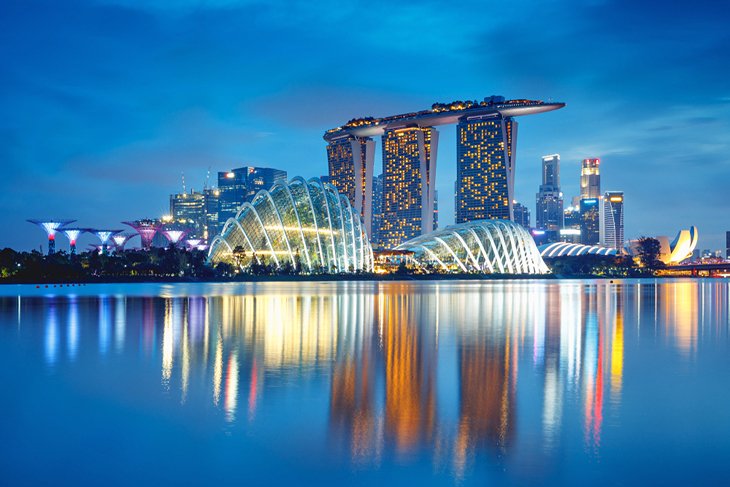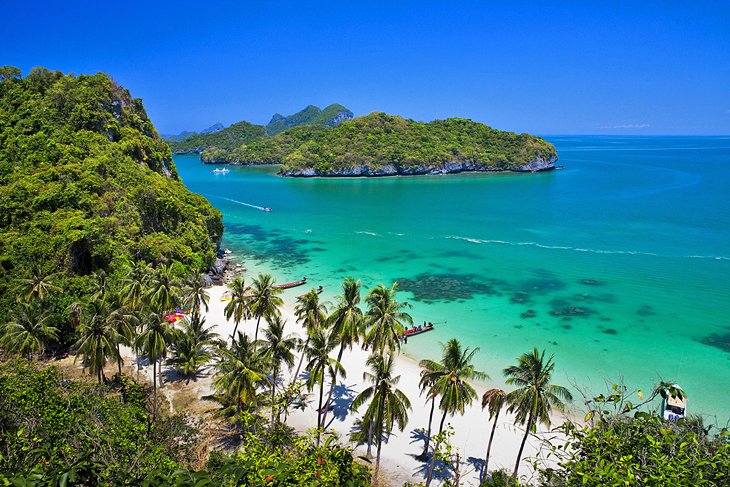
Southeast Asia, a vibrant and diverse region, beckons travelers with its rich tapestry of ancient history, pulsating modern cities, and awe-inspiring natural beauty. From the emerald rice paddies of Vietnam to the pristine beaches of Thailand and the majestic temples of Cambodia, this corner of the globe offers an unforgettable journey for every kind of adventurer. This article delves into some of the best destinations in Southeast Asia, exploring their historical significance, main attractions, practical travel tips, ideal visiting times, accommodation options, delectable local cuisine, and efficient transportation networks.
A Glimpse into Southeast Asia’s Rich History:
The history of Southeast Asia is a captivating saga of empires, trade routes, and cultural exchange. For millennia, the region has been a crossroads, influenced by Indian, Chinese, and later, European powers. Ancient civilizations flourished, leaving behind monumental architectural marvels. The Khmer Empire, centered in Cambodia, built the magnificent Angkor Wat, a testament to their architectural prowess and spiritual devotion. In Thailand, the Sukhothai and Ayutthaya kingdoms laid the foundations of Thai culture and Buddhism. Vietnam’s history is marked by periods of Chinese rule, French colonialism, and a fierce struggle for independence. Indonesia, a vast archipelago, was shaped by powerful maritime empires like Srivijaya and Majapahit, and later by Dutch colonial rule. This historical legacy is palpable in the architecture, traditions, and the very soul of the region.
Related Articles about Southeast Asia: A Tapestry of Ancient Wonders, Bustling Cities, and Breathtaking Landscapes:
- Nepal: A Journey to the Roof of the World and Beyond
- Your Ultimate Travel Guide to the Netherlands: Windmills, Canals, and Artistic Treasures
- The Empire State of Wonders: Unveiling the Best Places to Visit in New York
- Thailand: A Traveler’s Odyssey Through the Land of Smiles
- Laos: A Symphony of Serenity, Spirituality, and Untamed Beauty
Unveiling the Gems: Best Destinations in Southeast Asia
While the entire region is brimming with wonders, here are some standout destinations that consistently capture the hearts of travelers:
1. Thailand: The Land of Smiles
Thailand, a perennial favorite, offers a perfect blend of ancient traditions and modern vibrancy.
- History: Thailand, formerly Siam, boasts a long and rich history, with kingdoms like Sukhothai and Ayutthaya shaping its cultural identity. It successfully resisted colonial rule, preserving its unique heritage.
- Main Attractions:
- Bangkok: A sprawling metropolis, Bangkok is a sensory overload of glittering temples (Wat Arun, Wat Pho), bustling street markets (Chatuchak Weekend Market), opulent palaces (Grand Palace), and a vibrant nightlife.
- Chiang Mai: Nestled in the northern mountains, Chiang Mai is a cultural hub with ancient temples, elephant sanctuaries, cooking classes, and the Doi Suthep temple offering panoramic views.
- Phuket & Koh Phi Phi: For postcard-perfect beaches, turquoise waters, and dramatic limestone cliffs, these southern islands are a must-visit. Activities include snorkeling, diving, island hopping, and relaxing on the sand.
- Ayutthaya: The former capital, now a UNESCO World Heritage site, showcases the magnificent ruins of ancient temples and palaces.
- Travel Tips: Dress modestly when visiting temples. Be prepared for the heat and humidity. Learn a few basic Thai phrases. Embrace the friendly "Land of Smiles" spirit.
- Best Time to Visit: The cool, dry season from November to February is ideal, with pleasant temperatures and less rain.
- Nearby Hotels: From luxury resorts in Phuket to charming boutique hotels in Chiang Mai and budget-friendly guesthouses in Bangkok, accommodation options are plentiful and cater to all budgets.
- Local Food: Thai cuisine is world-renowned. Don’t miss Pad Thai, Green Curry, Tom Yum Goong, Som Tum (papaya salad), and Mango Sticky Rice. Street food is an integral part of the experience.
- Transportation: Bangkok has an efficient BTS Skytrain and MRT subway system. Inter-city travel is best done by overnight buses, trains, or domestic flights. Tuktuks and taxis are readily available in cities.
2. Vietnam: A Journey Through Time and Taste
Vietnam, a country of dramatic landscapes and resilient spirit, offers a compelling historical narrative and incredible culinary delights.
- History: Vietnam’s history is a saga of resilience, marked by periods of Chinese dominion, French colonization, and the Vietnam War. This history has shaped its culture and its people.
- Main Attractions:
- Hanoi: The charming capital, with its Old Quarter’s maze-like streets, Hoan Kiem Lake, and the Ho Chi Minh Mausoleum.
- Ha Long Bay: A UNESCO World Heritage site, this iconic bay features thousands of limestone karsts and islets rising from emerald waters, perfect for cruising and kayaking.
- Hoi An: A beautifully preserved ancient town, known for its tailor shops, vibrant lanterns, and charming architecture.
- Ho Chi Minh City (Saigon): A bustling metropolis with a blend of colonial architecture and modern skyscrapers, offering historical sites like the War Remnants Museum and Cu Chi Tunnels.
- Mekong Delta: Explore the intricate network of waterways, floating markets, and lush agricultural landscapes.
- Travel Tips: Be mindful of traffic in cities. Negotiate prices before taking taxis or buying souvenirs. Stay hydrated. Embrace the Vietnamese people’s warmth.
- Best Time to Visit: Varies by region. North: September to November (autumn) and March to April (spring). Central: January to August. South: December to April.
- Nearby Hotels: A wide range of hotels, from luxury beachfront resorts in Da Nang to boutique hotels in Hoi An and budget hostels in backpacker districts.
- Local Food: Vietnamese cuisine is fresh, healthy, and flavorful. Must-tries include Pho (noodle soup), Banh Mi (baguette sandwich), Spring Rolls (Goi Cuon), Bun Cha, and Ca Phe Sua Da (iced coffee with condensed milk).
- Transportation: Domestic flights are efficient for long distances. Sleeper buses are a popular and affordable option. In cities, taxis, Grab (ride-hailing app), and motorbikes are common.
3. Cambodia: The Kingdom of Wonder
Cambodia is synonymous with the magnificent Angkor Wat, but it offers much more than just its iconic temples.
- History: Cambodia’s history is dominated by the grandeur of the Khmer Empire, which built the awe-inspiring Angkor complex. The country also endured the tragic Khmer Rouge regime, a dark chapter that has profoundly shaped its present.
- Main Attractions:
- Siem Reap & Angkor Wat: The undisputed highlight. Explore the vast temple complex, including Angkor Wat, Angkor Thom (with the Bayon temple), and Ta Prohm (the "Tomb Raider" temple).
- Phnom Penh: The capital city, offering historical insights at the Royal Palace, Silver Pagoda, and the sobering Tuol Sleng Genocide Museum and Killing Fields.
- Kampot & Kep: Coastal towns known for their laid-back atmosphere, pepper plantations, and fresh seafood.
- Tonle Sap Lake: Southeast Asia’s largest freshwater lake, with unique floating villages.
- Travel Tips: Dress respectfully when visiting temples (shoulders and knees covered). Be patient and understanding as the country continues to heal from its past. Consider hiring a local guide for a deeper understanding of Angkor.
- Best Time to Visit: The dry season from November to March offers pleasant temperatures and minimal rainfall.
- Nearby Hotels: Siem Reap has a vast array of accommodations, from luxurious hotels to charming guesthouses. Phnom Penh also offers a good selection.
- Local Food: Khmer cuisine is milder than its Thai counterpart but equally delicious. Sample Amok (fish curry), Lok Lak (stir-fried beef), and Khmer noodles.
- Transportation: Within Siem Reap, tuk-tuks are the primary mode of transport. Buses and private taxis connect major cities. Flights are available between Phnom Penh and Siem Reap.
4. Indonesia: The Archipelago of Diversity
Indonesia, an immense archipelago, offers an unparalleled diversity of landscapes, cultures, and experiences.
- History: Indonesia’s history is a rich tapestry woven from ancient kingdoms, spice trade routes, and Dutch colonial rule. It’s a nation formed from hundreds of distinct ethnic groups.
- Main Attractions:
- Bali: The "Island of the Gods" is famous for its spiritual ambiance, lush rice terraces (Ubud), volcanic mountains, pristine beaches, and vibrant Hindu culture.
- Java: Home to the magnificent Borobudur (Buddhist temple) and Prambanan (Hindu temple) temples, as well as the bustling capital, Jakarta.
- Komodo National Park: Witness the awe-inspiring Komodo dragons in their natural habitat and explore stunning islands.
- Lombok: A less crowded alternative to Bali, offering beautiful beaches, Mount Rinjani for trekkers, and the Gili Islands for snorkeling and diving.
- Travel Tips: Respect local customs, especially in religious sites. Be prepared for diverse climates across the islands. Learn basic Indonesian phrases.
- Best Time to Visit: The dry season, generally from April to October, is ideal for most of the country.
- Nearby Hotels: Bali offers everything from ultra-luxury villas to budget-friendly hostels. Java and other islands also have a wide range of options.
- Local Food: Indonesian cuisine is diverse and flavorful. Try Nasi Goreng (fried rice), Satay, Gado-Gado (vegetable salad with peanut sauce), and Rendang (spicy beef stew).
- Transportation: Inter-island travel is primarily by plane or ferry. Within islands, domestic flights, trains (Java), buses, and car rentals are common. Ride-hailing apps are available in major cities.
5. Malaysia: A Melting Pot of Cultures
Malaysia presents a fascinating blend of Malay, Chinese, and Indian influences, reflected in its cuisine, architecture, and traditions.
- History: Malaysia’s history is shaped by its strategic location on trade routes, leading to influences from Indian, Chinese, and European powers, particularly the British.
- Main Attractions:
- Kuala Lumpur: A modern metropolis featuring the iconic Petronas Twin Towers, Batu Caves, vibrant street food scene, and diverse shopping malls.
- Penang: A UNESCO World Heritage city, renowned for its delicious street food, colonial architecture in George Town, and vibrant arts scene.
- Langkawi: An archipelago of duty-free islands offering beautiful beaches, lush rainforests, and the Langkawi Sky Bridge.
- Malacca: A historical port city with a rich colonial past, showcasing Portuguese, Dutch, and British influences in its architecture and culture.
- Travel Tips: Malaysia is a Muslim-majority country, so dress modestly when visiting religious sites. Embrace the multiculturalism and try dishes from all communities.
- Best Time to Visit: West Coast (Penang, Langkawi, KL): December to February. East Coast (islands like Perhentian): March to October.
- Nearby Hotels: Kuala Lumpur offers a vast range of hotels, from luxury high-rises to budget-friendly options. Penang and other destinations also provide diverse accommodation.
- Local Food: Malaysian cuisine is a delicious fusion. Don’t miss Nasi Lemak (coconut rice dish), Char Kway Teow (stir-fried noodles), Laksa, Roti Canai, and Satay.
- Transportation: Malaysia has an excellent public transportation system. Kuala Lumpur has a comprehensive light rail and monorail network. Inter-city travel is best by bus or train. Domestic flights are also available.
General Travel Tips for Southeast Asia:
- Visas: Check visa requirements for your nationality well in advance. Many countries offer visa-on-arrival or visa-free entry for short stays.
- Currency: Each country has its own currency. ATMs are widely available in major cities and tourist areas.
- Health: Consult your doctor about recommended vaccinations and malaria precautions. Drink bottled water only.
- Connectivity: SIM cards are readily available and affordable for data access.
- Bargaining: Bargaining is common in markets and with tuk-tuk drivers, but do so politely and with a smile.
- Respect Local Customs: Be mindful of local traditions and dress codes, especially when visiting religious sites.
Embark on Your Southeast Asian Adventure:
Southeast Asia is a region that promises a kaleidoscope of experiences, from the spiritual serenity of ancient temples to the exhilarating energy of bustling metropolises and the breathtaking beauty of natural landscapes. With careful planning and an open mind, your journey through this enchanting part of the world will undoubtedly be an unforgettable adventure, leaving you with cherished memories and a longing to return.








